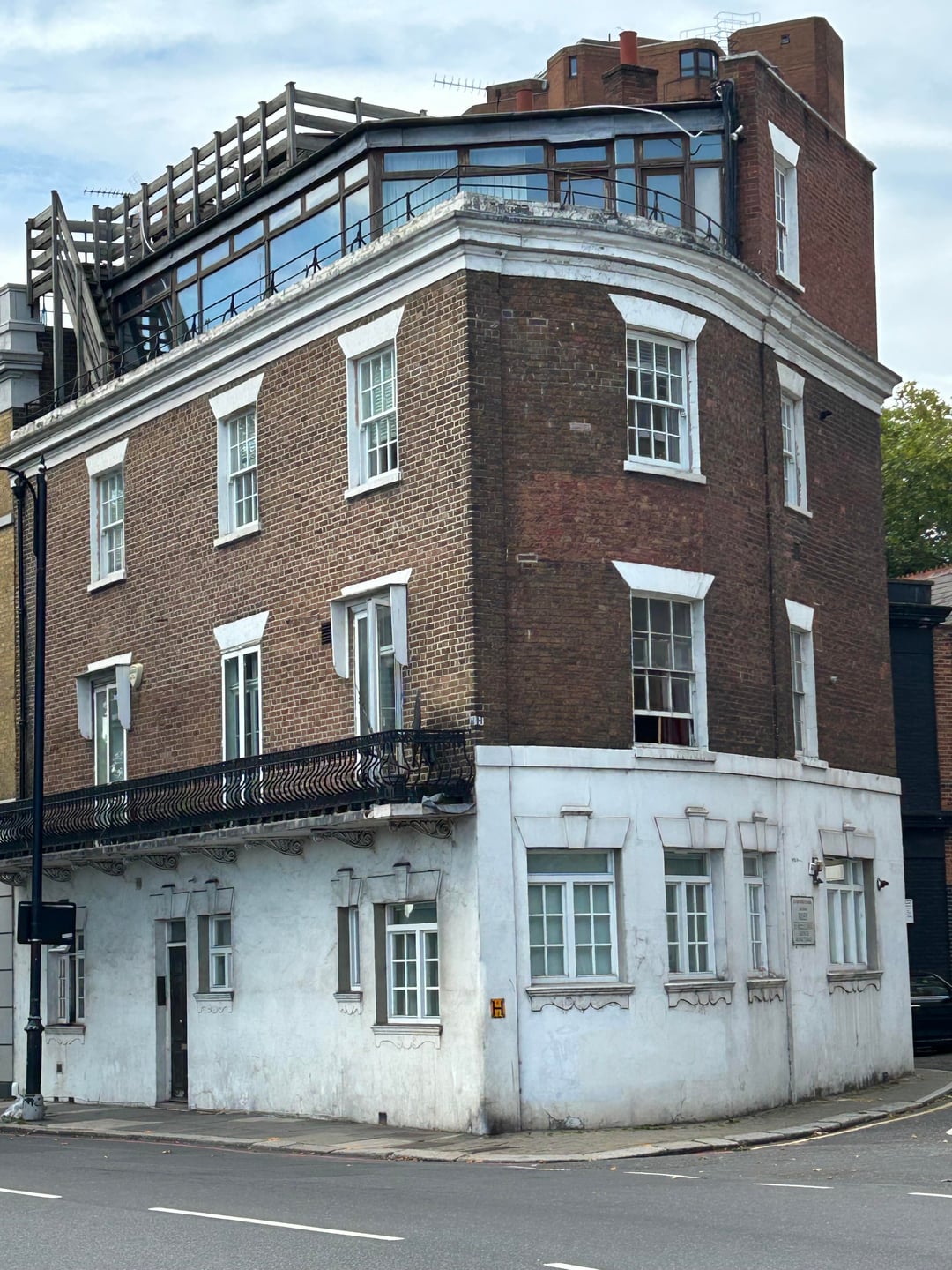
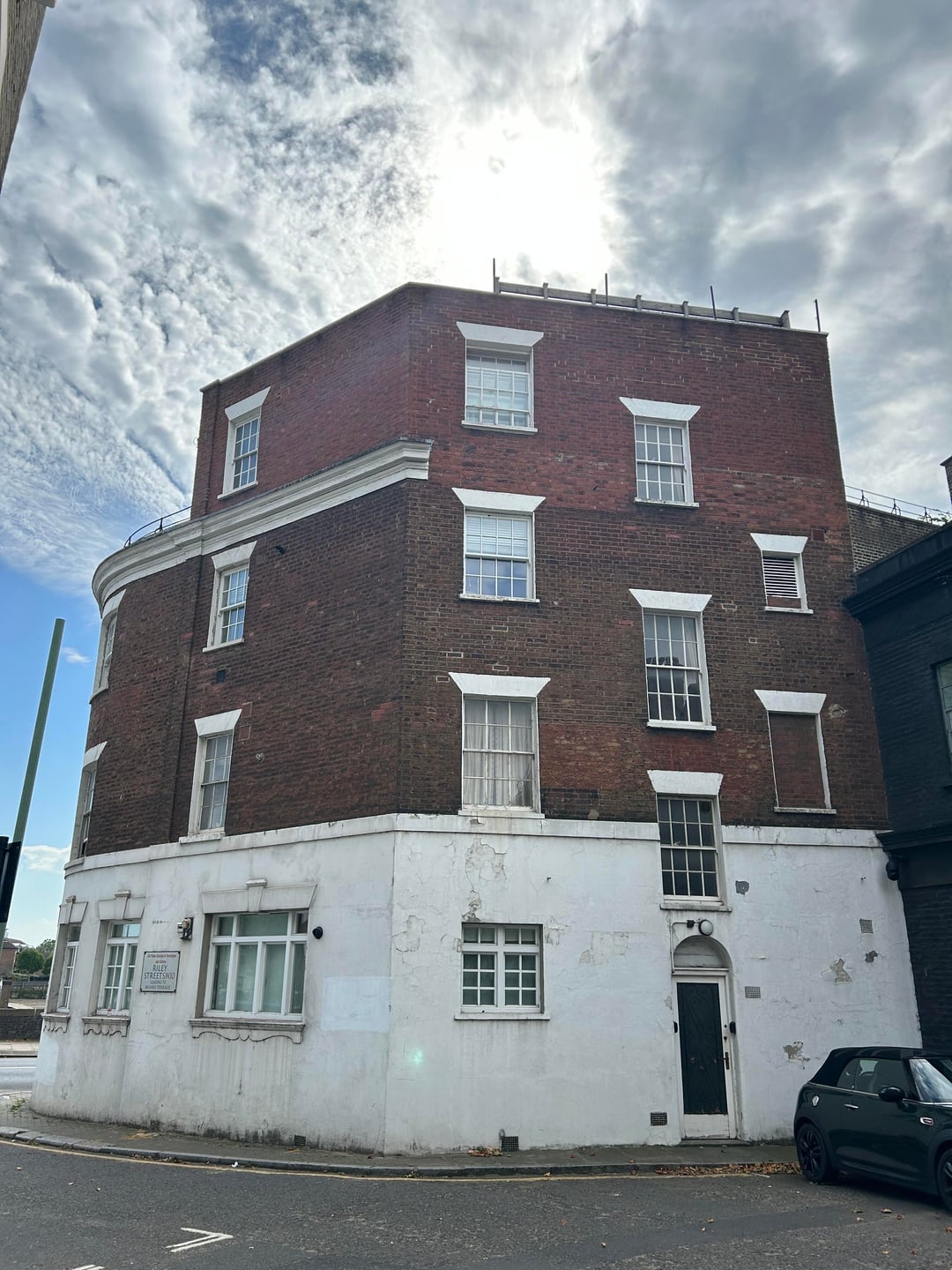
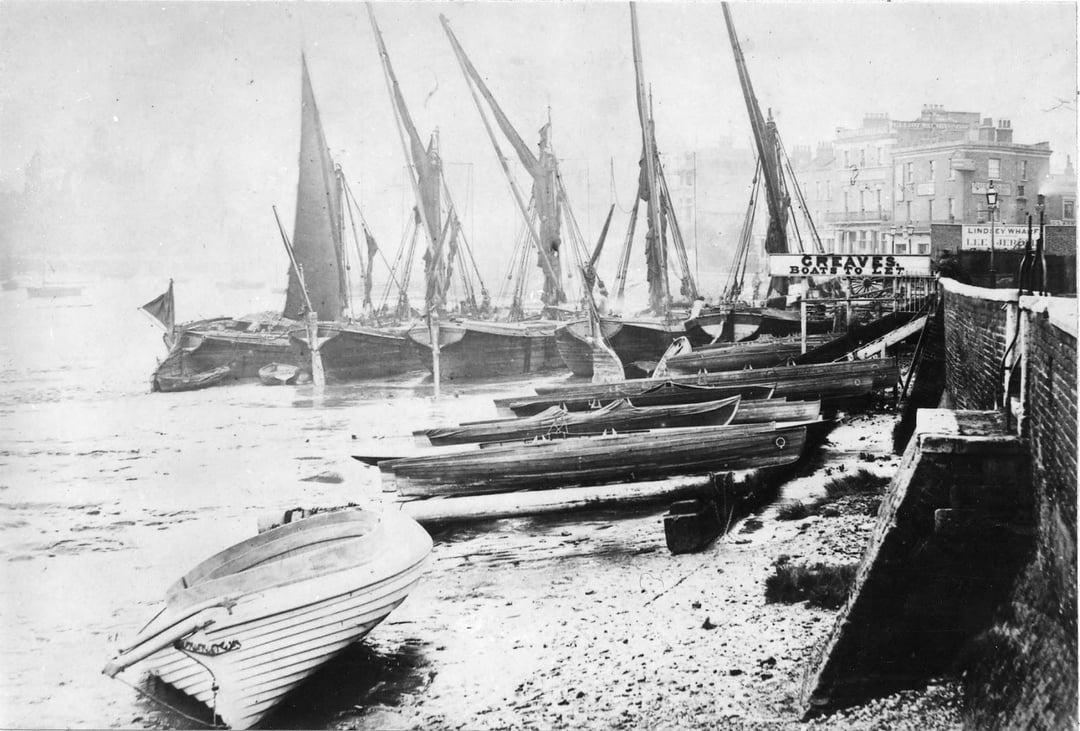
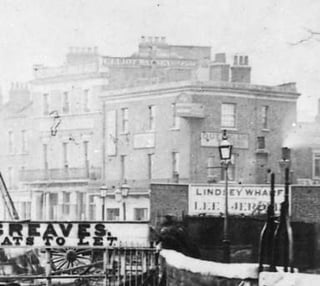
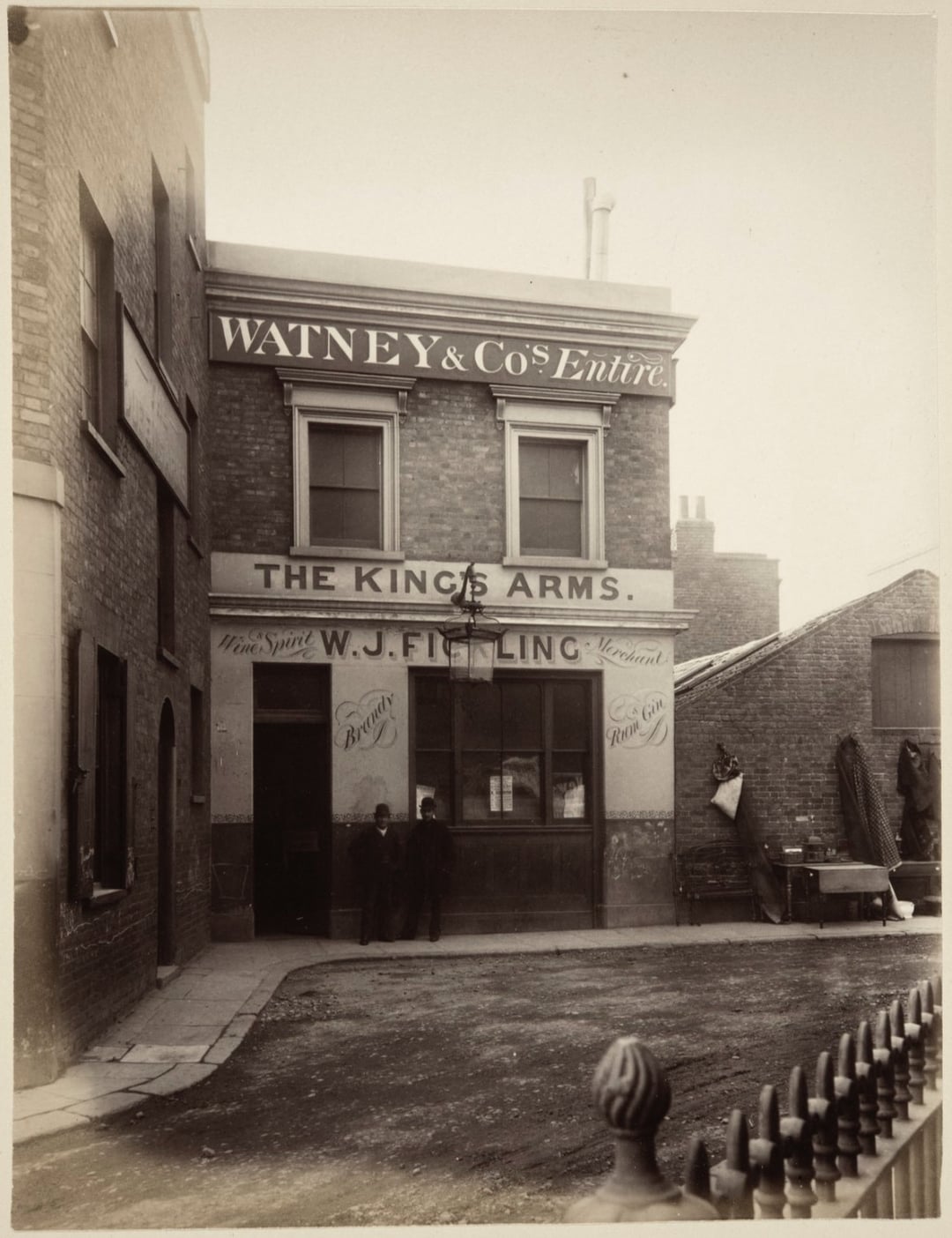
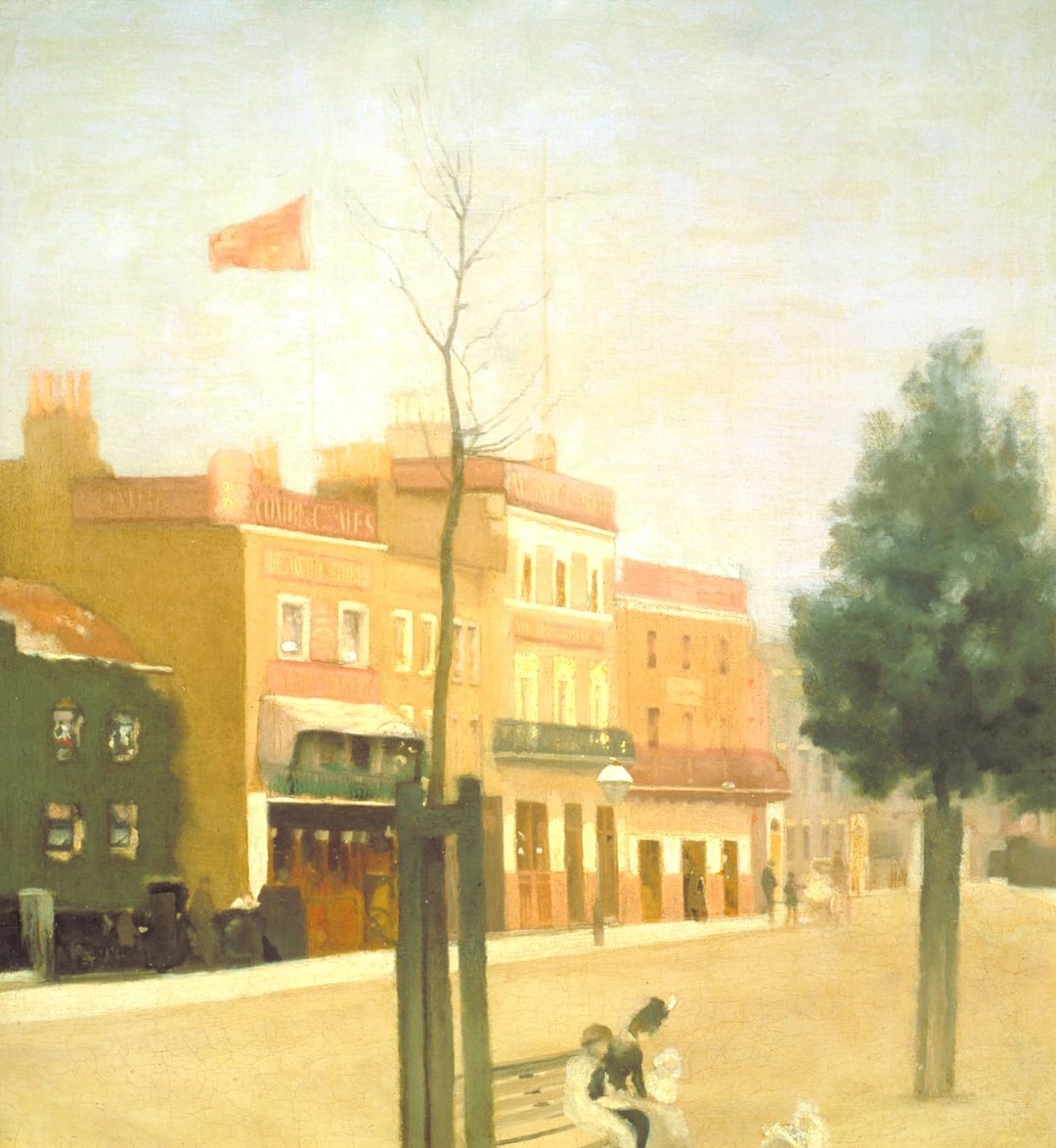
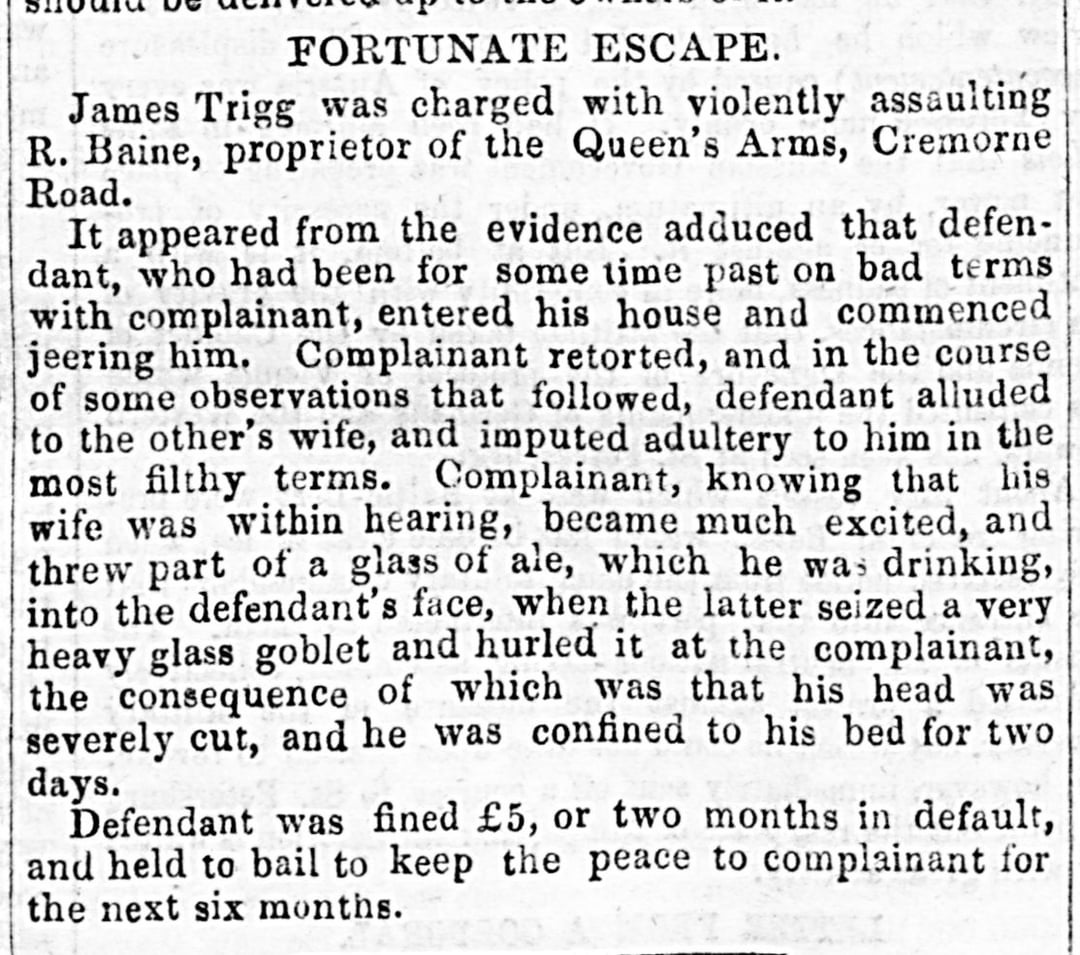
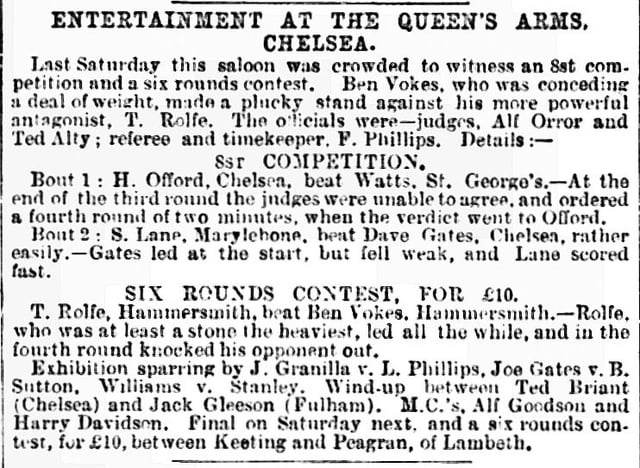
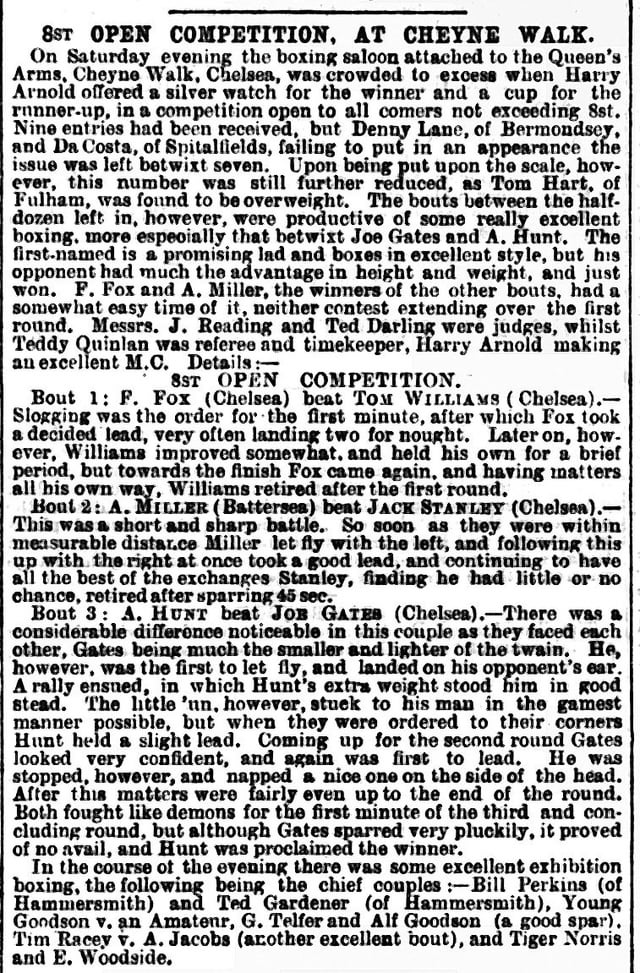
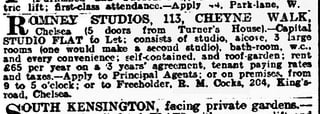
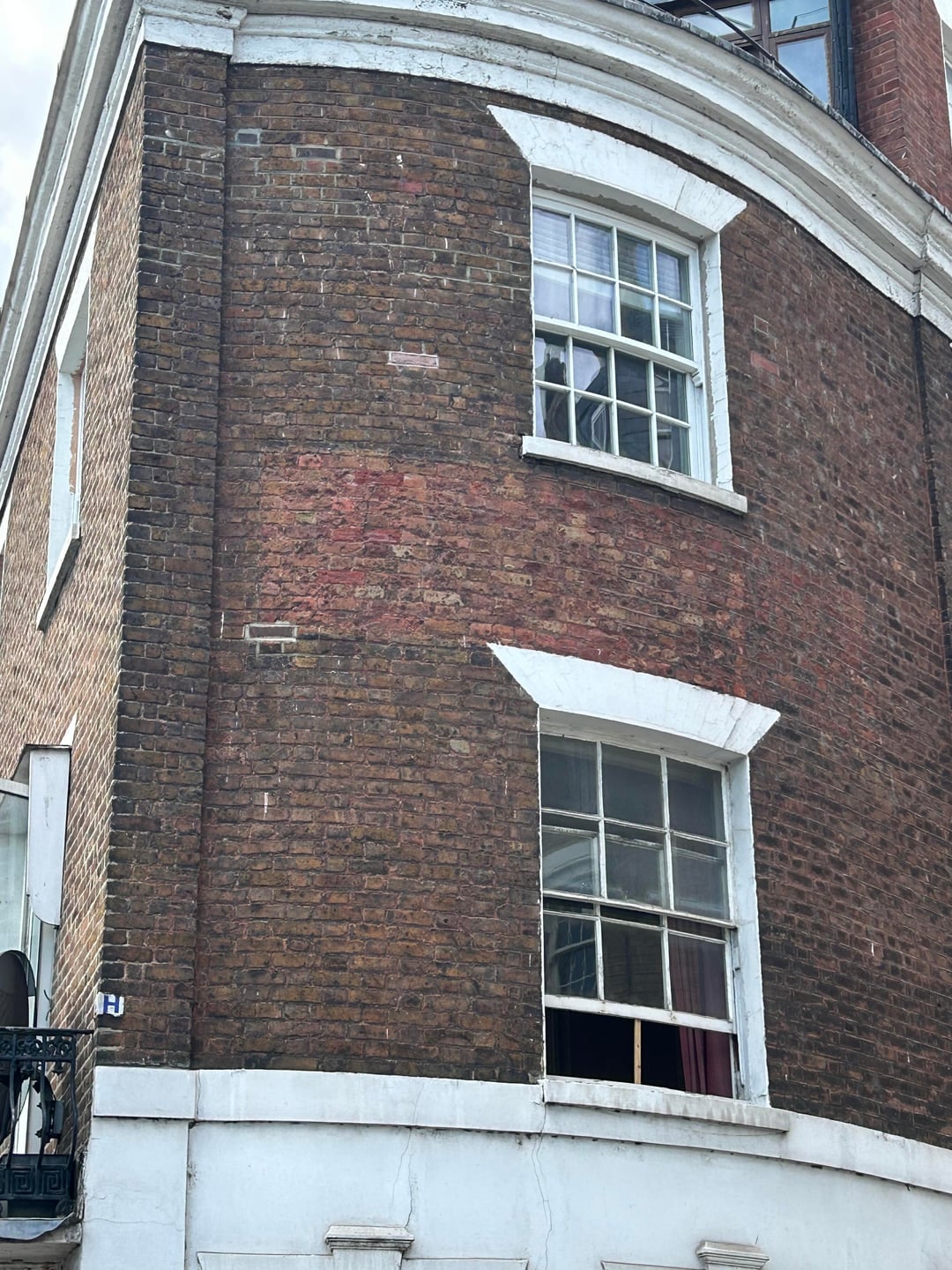
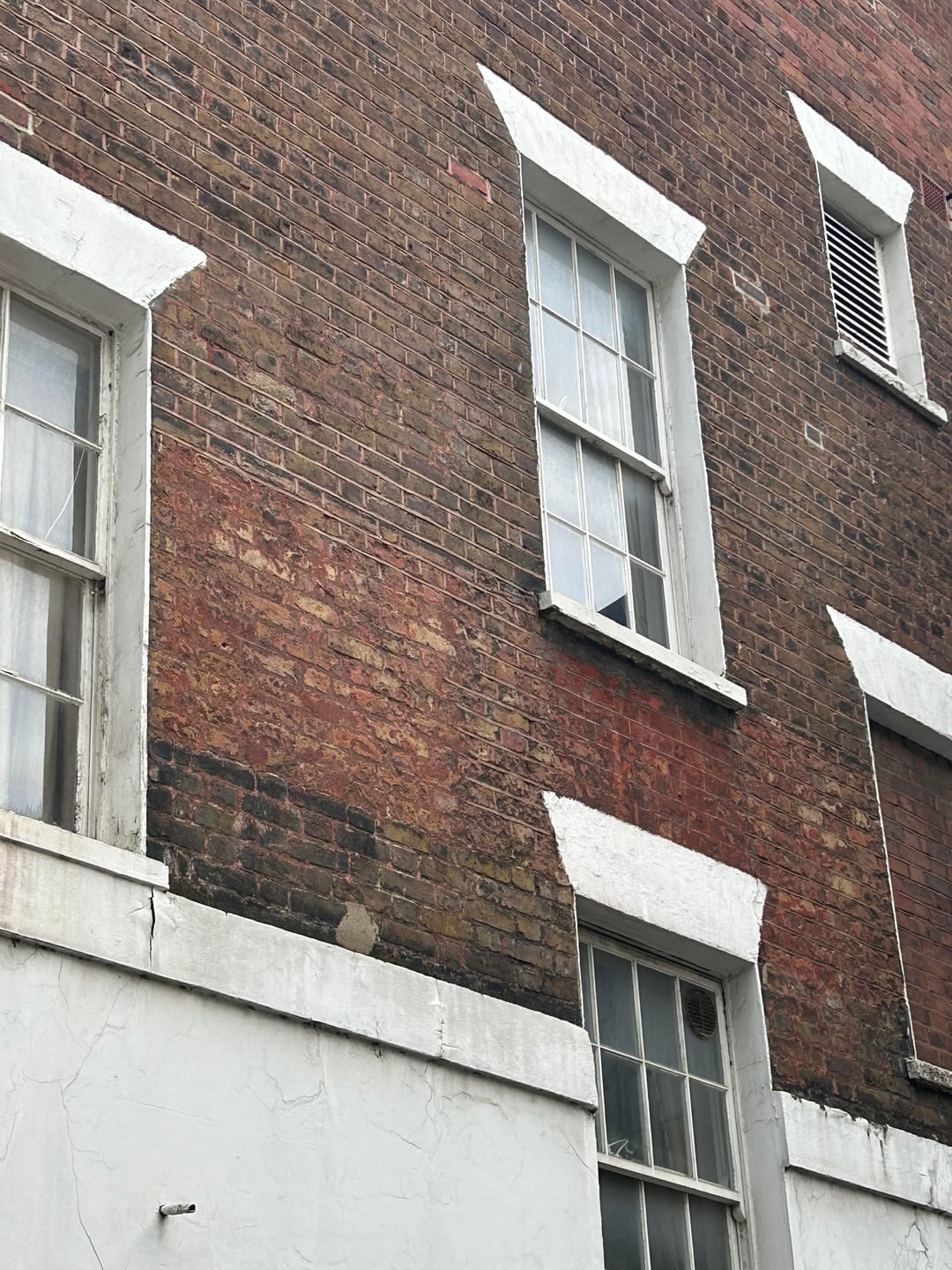
If you walk down Cheyne Walk today you’ll find a quiet, slightly shabby stuccoed corner house at No. 113, now divided into flats with an iron balcony. Unlike some lost pubs where traces of the old trade are obvious, here there is almost nothing to hint at its past. Yet for more than fifty years this was one of Chelsea’s lively riverside watering holes: the Queen’s Arms.
There’s a frustrating lack of photographs of the pub in its beer-serving days, and I almost gave up on posting about it. After trawling through images of the Chelsea waterfront I finally struck gold: in image 3, and more clearly in the enhanced crop of image 4, you can just make out the sign for the Queen’s Arms on the corner of Cremorne Road and Riley Street, with the King’s Arms standing next door. Judging from the unfinished riverfront in the shot, it was probably taken in the 1860s, before the Chelsea Embankment was built and this stretch of Cremorne Road became part of Cheyne Walk.
Only two other pictures of the building as a pub have surfaced, neither very satisfactory. One shows the back of the pub with sign forming the left-hand wall behind its neighbour, the King’s Arms (image 5). Another is Paul Maitland’s 1889 painting The Three Public-Houses, Morning Sunlight, (image 6) which depicts the Aquatic, the King’s Arms, and the Queen’s Arms (left to right). Maitland cleverly hides Nos. 115 and 116 Cheyne Walk behind a sapling, making the trio seem like a single row of pubs.
I have posted about the other two neighbouring pubs before and link them here for reference:
https://www.reddit.com/r/london/comments/1nchiu6/lost_pubs_of_london_the_aquatic_cheyne_walk_sw10/
https://www.reddit.com/r/london/comments/1ngs1m8/lost_pubs_of_london_the_kings_arms_cheyne_walk_sw3/
The first time I was able to find the Queen’s Arms in print is 1854 (image 7), in a lively court report. A landlord named R. Baine, “proprietor of the Queen’s Arms, Cremorne Road,” was assaulted after an argument with a customer. That scrap captures the rough-and-ready tone of Chelsea’s riverfront, boatmen, labourers, visitors to Cremorne Gardens spilling in for a pint and it proves the pub was open by the mid-1850s. As it doesn’t appear in the 1851 census, its birth probably belongs to the early 1850s, a child of the Beerhouse Act of 1830.
By the 1880s the Queen’s Arms was thriving. Trade directories list it as a “beer and wine retailer,” but interestingly the pub boasted a boxing saloon. Sporting Life in 1889 described “open competitions” (image 8 & 9) and six-round contests for a silver watch or a £10 purse, with local lads like Ben Vokes and T. Rolfe trading punches while referees and timekeepers kept order. Picture a smoky bar beside the Thames, the back room cleared for an eight-stone tournament, working class punters pressed tight around the ropes.
By the early 1900s the licence was held by Raymond William Foot, but Chelsea was changing: fewer dockers and boatmen, a rise of temperance, and a government eager to thin out “redundant” pubs under the Licensing Act of 1904. In 1908 magistrates placed the Queen’s Arms on their closure list; by January 1909 the licence was gone, with a surprisingly generous £4,336 compensation divided between Foot, the brewery, and the freeholder.
Within months the old pub reappeared as Rodney Studios, 113 Cheyne Walk a self-contained artist’s flat with roof garden, £65 a year (image 10). Through the rest of the century it remained residential. Today the building, once alive with pints, fists, and gossip, shows almost nothing of that past… though if you study the brickwork carefully, you might just spot faint scars where the pub sign once hung, more than a hundred years ago (image 11 and 12).
by the_englishman
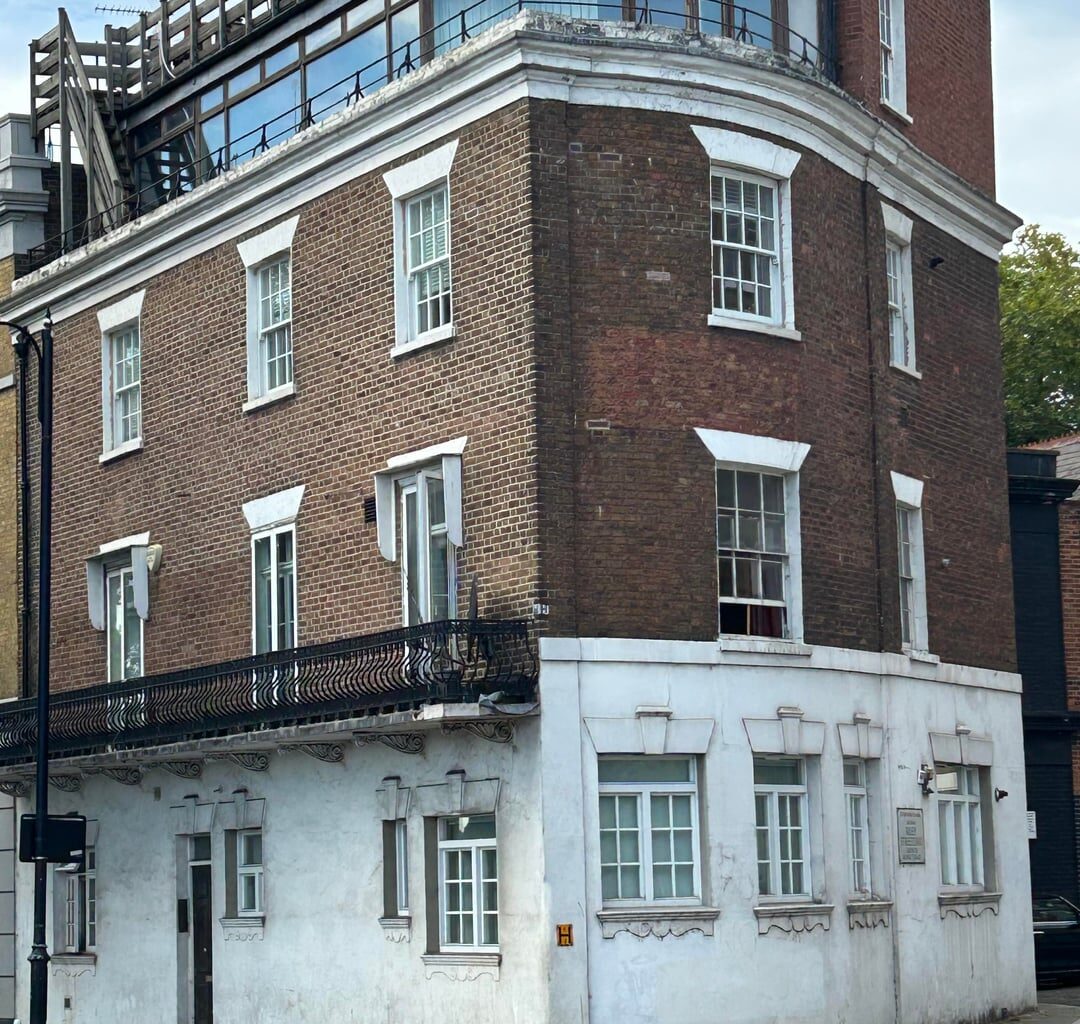
1 comment
There was an urban myth in the 80s that it had been bought and closed down by a teetotal rock star, possibly Bryan Adams.
Comments are closed.